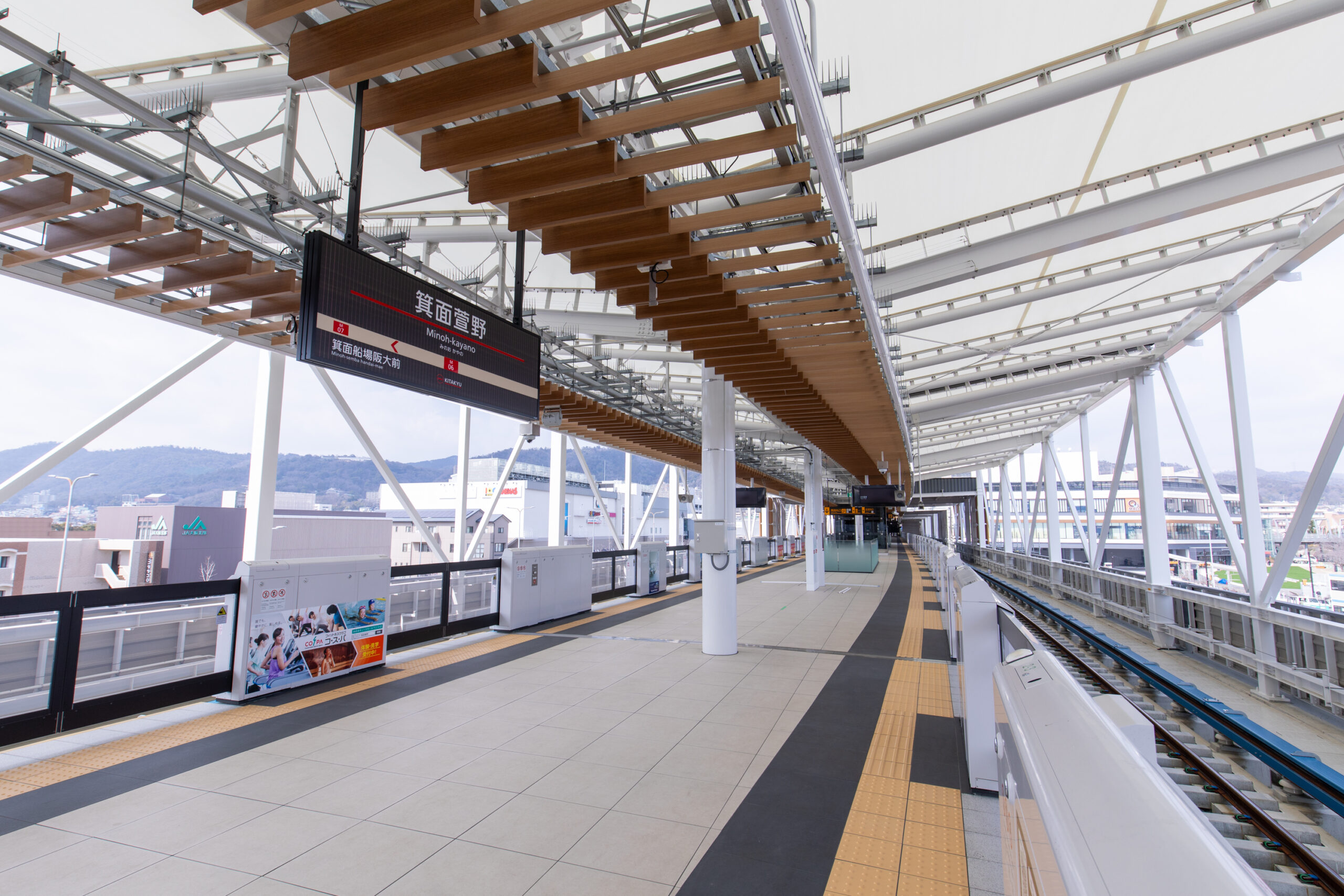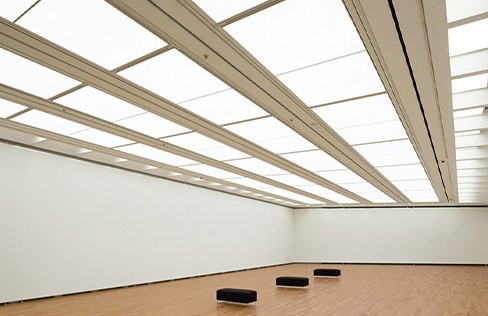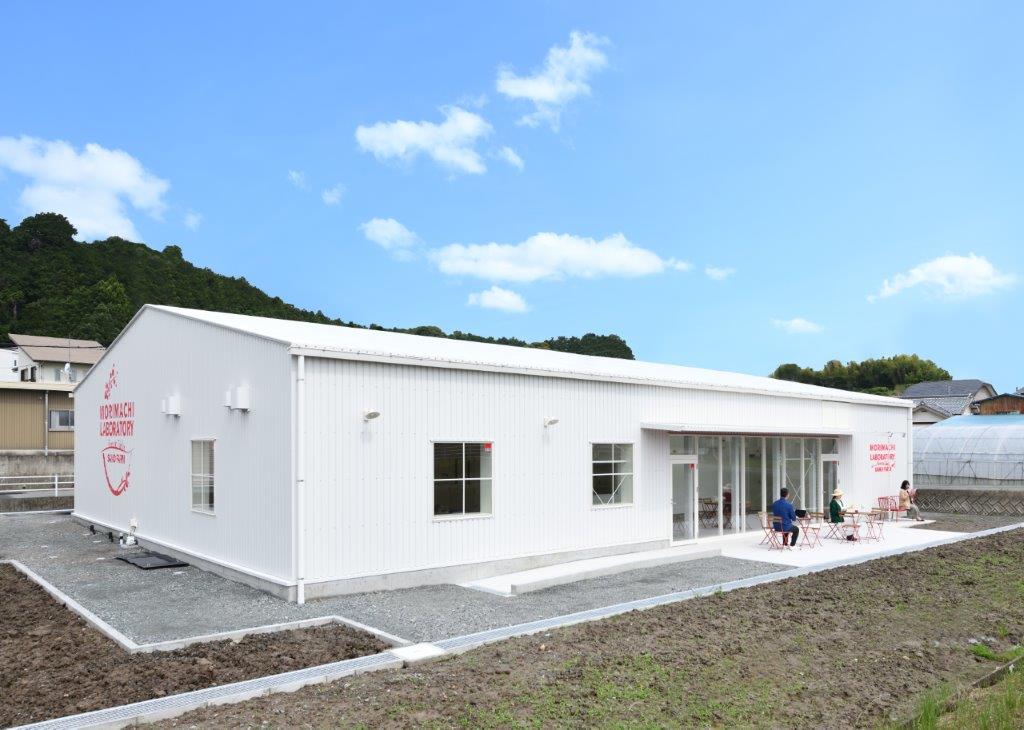

Taiyo Kogyo Column
The “J Village” has been revived as a sacred place for soccer, symbolizing each person’s thoughts toward the reconstruction from the Great East Japan Earthquake.
2024.03.13
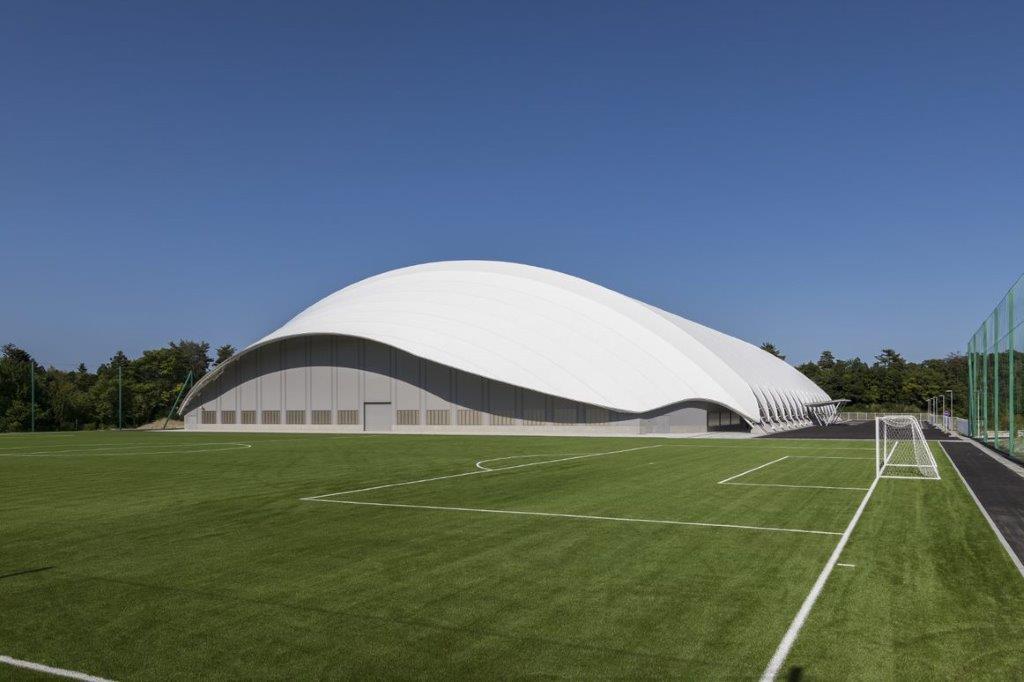
J Village, Fukushima Prefecture’s national soccer training center, was devastated by the Great East Japan Earthquake in 2011 and was closed for a long time.
The reconstruction project, which carried the hopes of many soccer players, was completed in 2019 as the new J-Village with a membrane roof and all-weather training facilities. The site was chosen as the grand starting point for the torch relay for the Tokyo 2020 Olympic Games, and has become more than just a renewed facility, but a testament to the recovery efforts.
Taiyo Kogyo’s membrane roofing technology made it possible to convert Japan’s first full soccer court into an indoor facility. Experts from each department, including sales, design, and construction supervision, worked on the project with a passion for reconstruction, trusting in their colleagues and making the most of their accumulated knowledge and skills. We interview these experts, who overcame numerous difficulties, about their passionate days and their deep emotion.
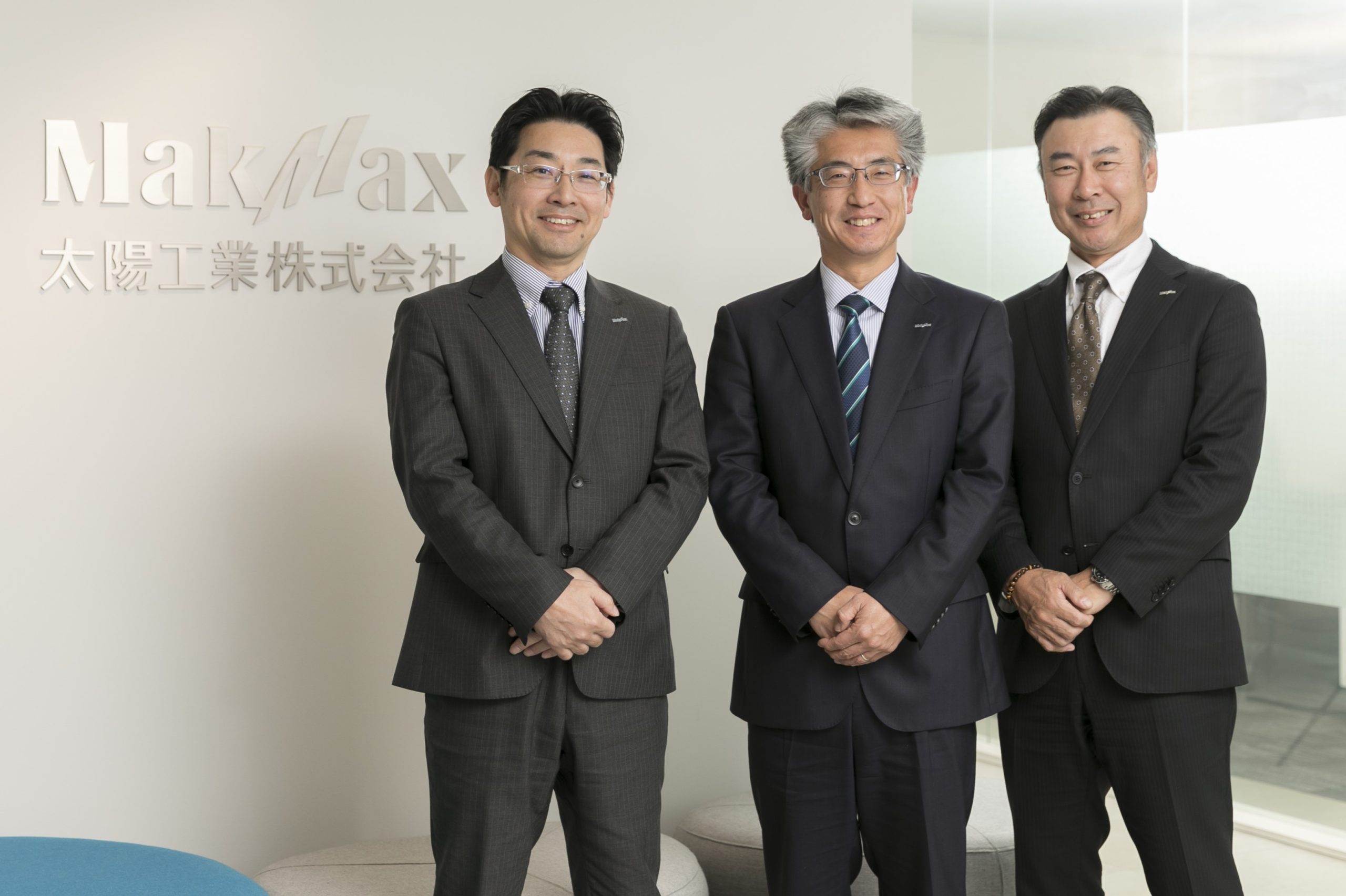
Left: Takashi Uemura
Construction Business Management Headquarters, Construction Sales Headquarters, East Japan Sales Department 2, Sales Section 1 Joined in 1995
Middle: Yosuke Anno
East Japan Construction Division 1, East Japan Construction Department, Construction Headquarters, Construction Business Management Headquarters Joined in 1993
Right: Shuji Niitani
Construction Business Management Headquarters, Construction Sales Headquarters, Kyushu Sales Department Joined in 1995
Design, manufacturing, construction, and the power that only membranes have.
Believing in Taiyo Kogyo's technological capabilities, we will push forward.
The J-Village project began with the persistent approach of Shuji Niitani (Niitani), who had worked in Kyushu for many years before coming to the Tohoku branch with an assignment to work on earthquake reconstruction. Niitani, who visited the client many times and did his best to win the order in a scrum with partner companies, and Takashi Uemura (Uemura), who followed up on Niitani’s efforts. Both men had confidence in membrane roofing and pride in their own technology.
Niitani:
I originally joined Taiyo Kogyo in Osaka, my hometown, and spent 16 years at the Kyushu branch before being transferred to the Tohoku branch in 2013 to help with reconstruction after the 2011 earthquake, where I was in charge of many reconstruction projects. I was impressed by the work we did to build more than 10 “children’s playgrounds” in Fukushima Prefecture, where children who were unable to go outside to play due to radiation could play in peace. I felt a sence of misson to these projects, so I made many trips from the Sendai branch office to Fukushima Prefecture, where the client was located.
As a sales representative, I have no particular concerns after receiving the order, because I believe that the design and construction will be well organized. However, I am anxious before recieving the order because there was a possibility that the membrane structure itself would not be adopted, and even if the membrane was adopted, it might be by another company. It was worth the many trips to the Fukushima prefectural government, and a membrane roof was adopted in the design-build requirements indicated by the prefectural government. In the basic design phase, a design firm that Uemura had worked closely with was awarded the contract, so we entrusted the specifications to Uemura, and as expected, he incorporated our membrane roof into the basic design drawings. Many general contractors and design firms teamed up to make proposals, and the membrane roof was adopted to some extent at the basic design stage. Together with Uemura and with the cooperation of the design and construction departments, we made a thorough presentation of our track record and technical capabilities to the general contractors who entered bids, and they trusted our track record and technical capabilities, which led to the adoption of our membrane roof instead of another company.
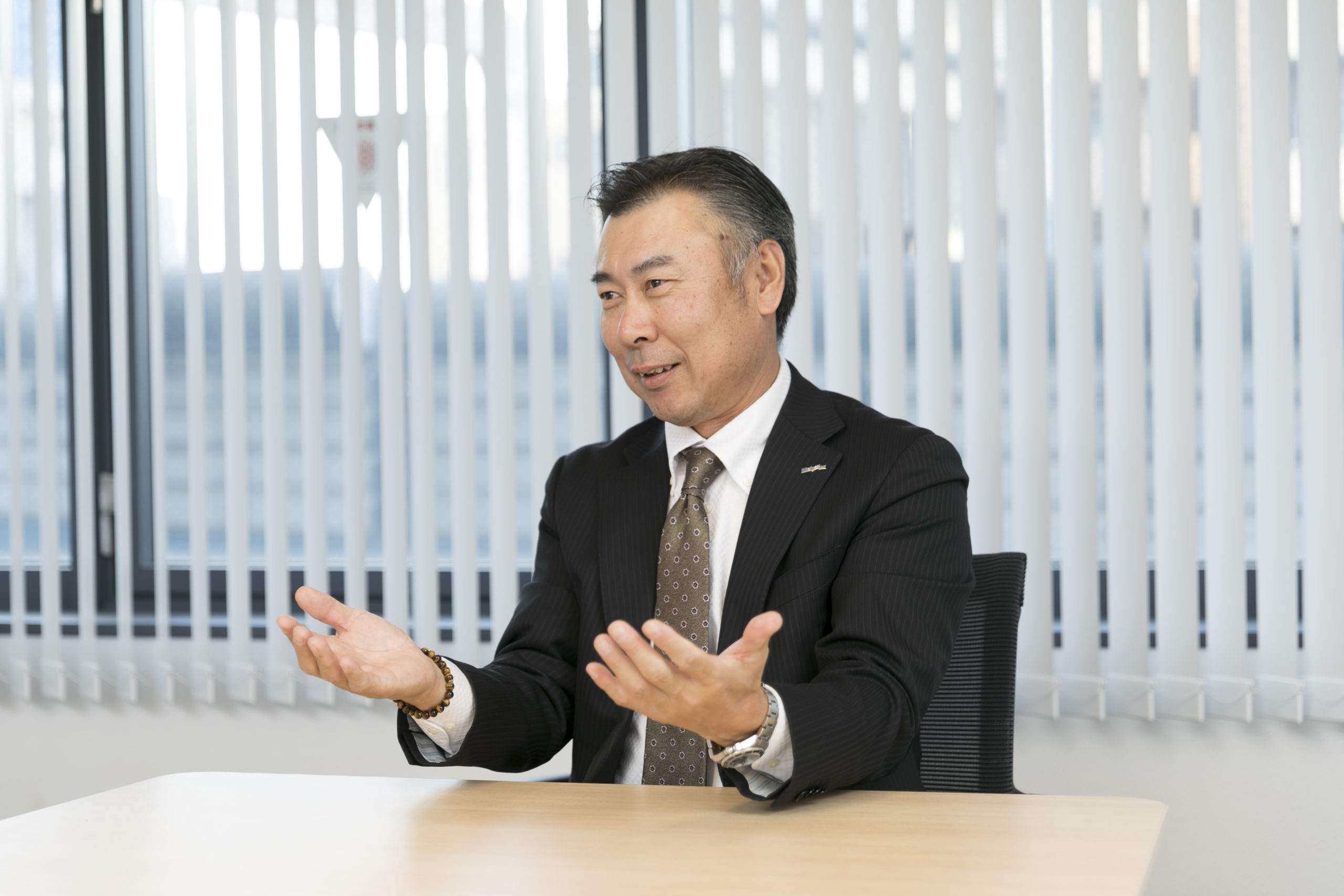
Uemura:
My job is to follow up with Mr. Niitani and bring Taiyo Kogyo’s products to the fold. The folding process means that the design drawings drawn by the design office include the membrane roof and the name of the product, which is a joyful moment for me as a sales representative.
I think what captured the client’s attention the most this time was the advantages of membranes. I think the client appreciated the fact that membrane is light and soft, making it strong enough to withstand the shaking of earthquakes, and that even if there were no electricity and no lighting during the earthquake, the interior space would be bright during the daytime because sunlight would come in. In addition, the location of the building is Futaba-gun, Fukushima Prefecture, so the flexible shape of the membrane is suitable for expressing the image of Futaba meaning leaves.
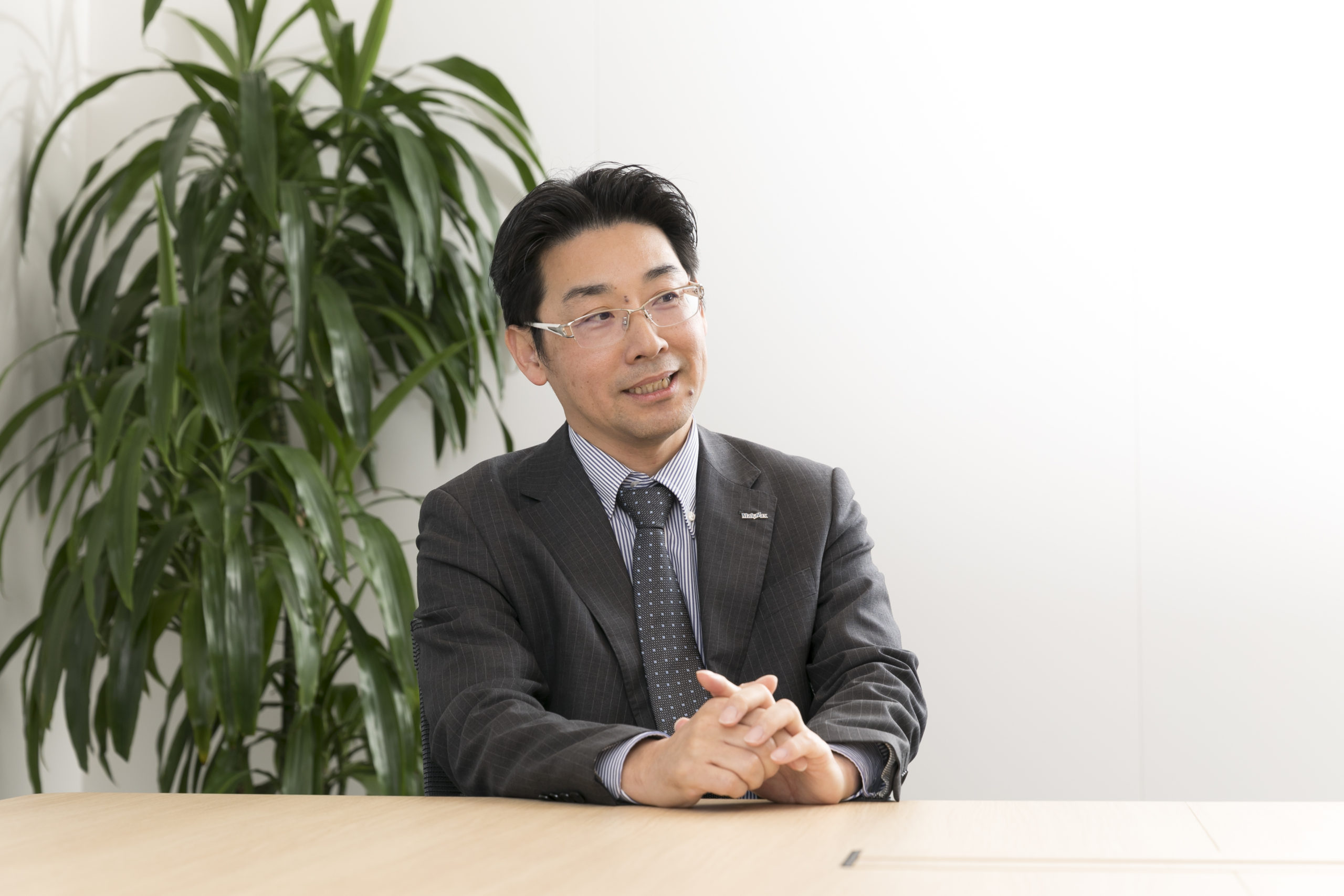
Niitani and Uemura smile and talk about their joy at receiving the order.
There were “no concerns at all” since receiving the order, they recall, as they talk about their trusted colleagues who along with the company’s product and technical capabilities, made the project a reality.
The members of the team, engineers Hideharu Yamaguchi (Yamaguchi) and Kenji Oya (Oya) and construction engineer Yosuke Anno (Anno), were interviewed about their state of mind at the time the order was received.
Oya:
I was in charge of the preliminary stage of construction, the basic design and implementation design. In cooperation with the design office, I made detailed drawings of the structural calculations for the membrane part. It is very rare to find a project that is large enough to cover a full soccer court, and it is not comparable to the shelters we usually work on for station plazas. The only thing on my mind was how to create the requested shape and how to proceed with the work quickly.
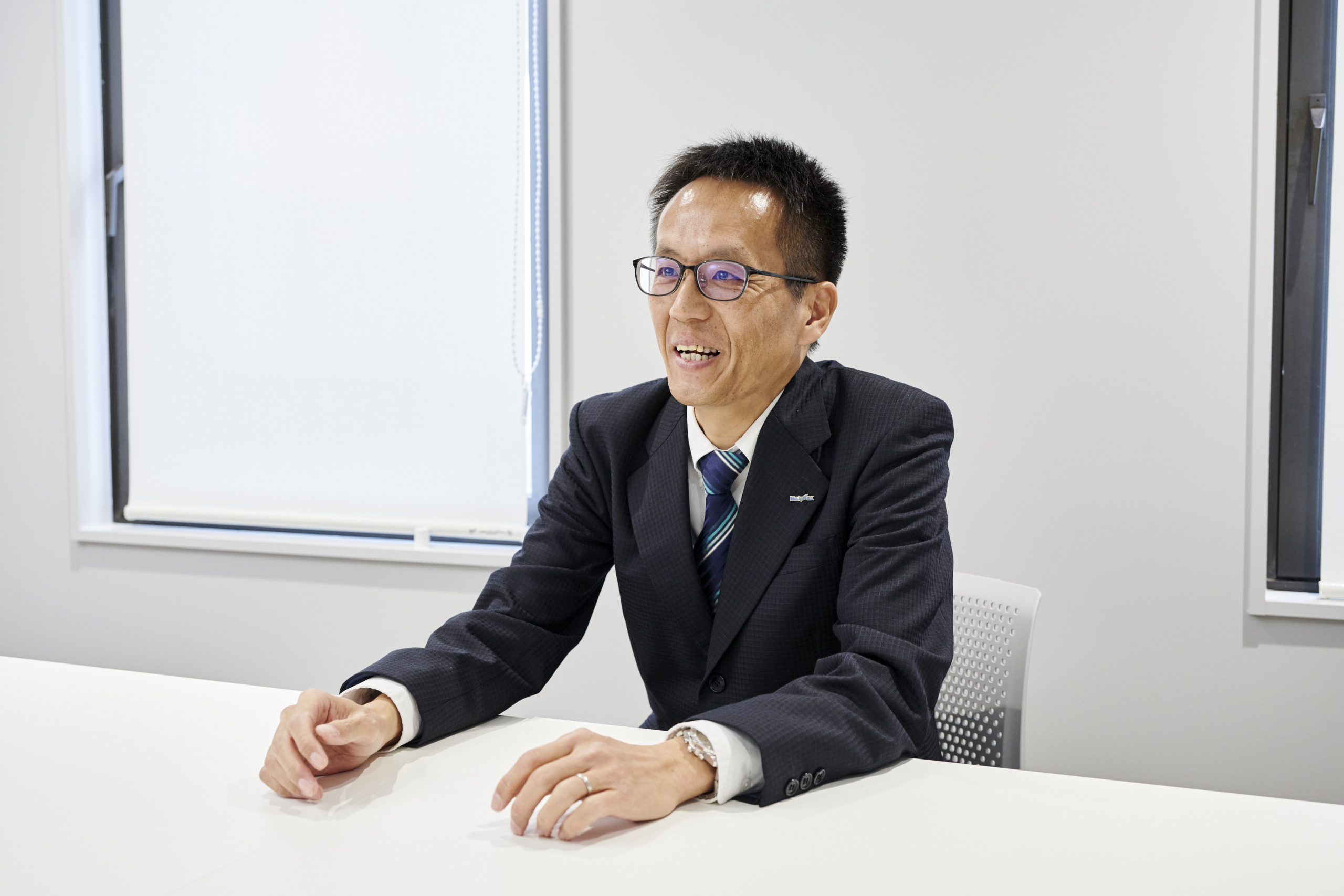
Yamaguchi:
I am in charge of putting together the construction drawings and membrane fabrication drawings, and getting the design phase approved. When I first saw the perspective, I was struck by the dynamic curves of the perimeter, with the membrane extending all the way to the hem, and how it should respond to the curve-oriented design, which is rare in Japan. From a technical point of view, however, there were many aspects similar to the projects we had undertaken in the past, so there was no resistance. When I participated in the on-site meetings, I was even more excited to be involved in a building that would become a symbol of reconstruction.
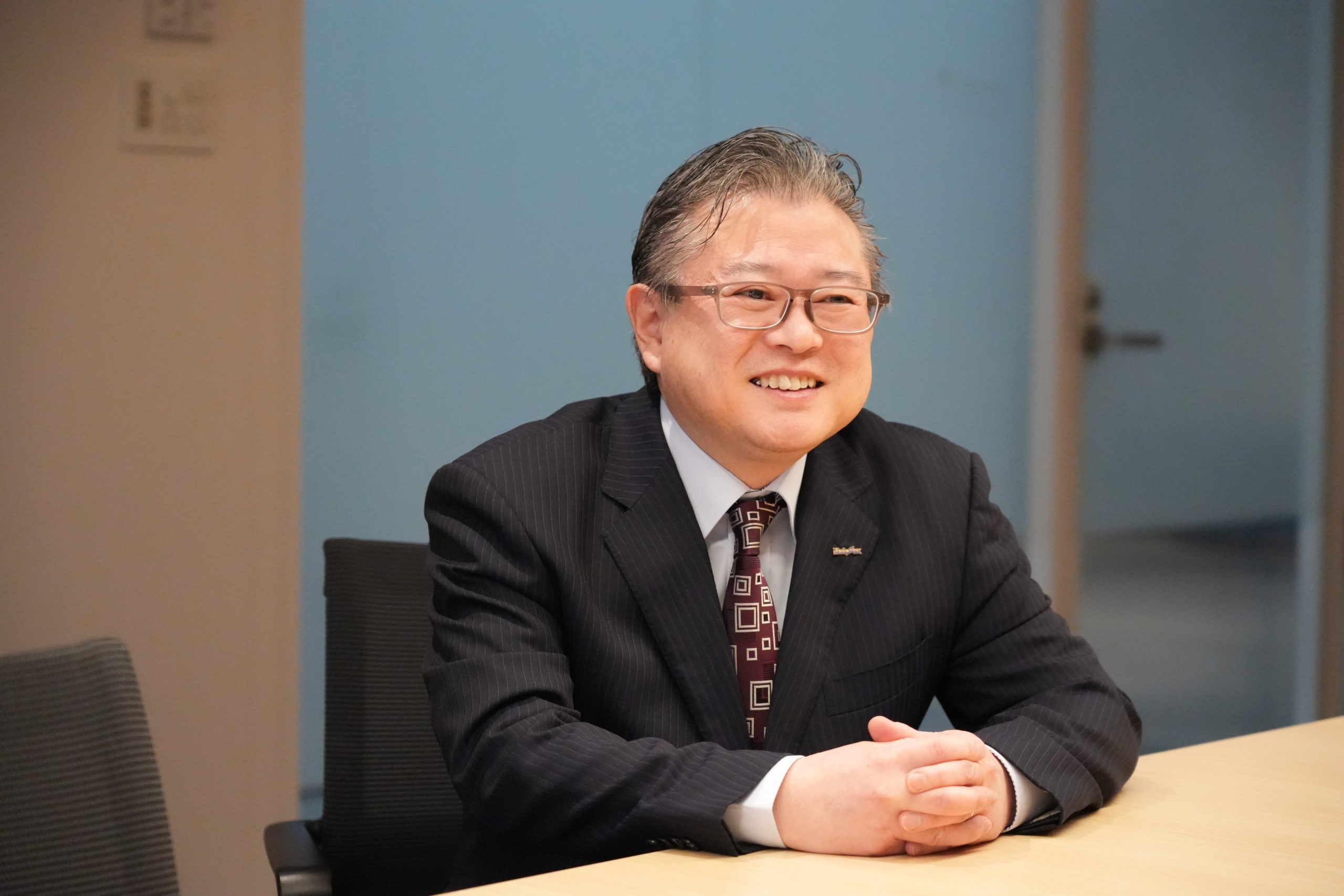
Anno:
Since I joined the company, I have been in charge of site progress management in the construction department, and have managed site construction progress on numerous large-scale projects, including the Yaesu Grand Roof at Tokyo Station.
As the project manager, I am responsible for the final assembly of the project, and I have a great deal of responsibility because my role is to give final shape to what the sales team has worked so hard to obtain and what the engineering team has worked so hard to create. On site, I have absolute confidence in all of our company’s departments, including engineering, design, manufacturing, and production. The most difficult part of the project is securing personnel, and we were able to complete this project by making full use of our internal network, with help from as far away as Kyushu and mobilizing subcontractors from all over Japan.
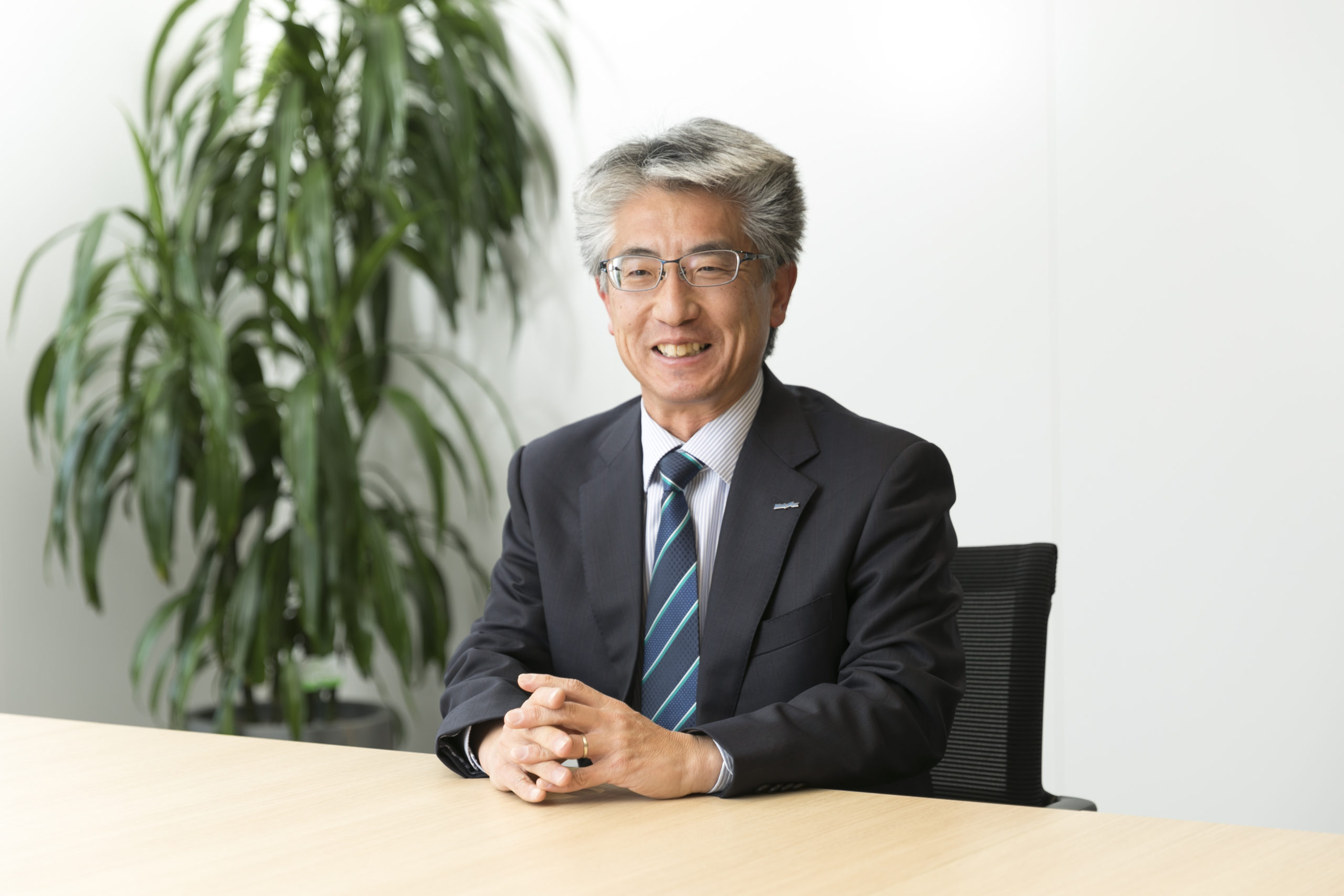
Safety, manpower, accommodations, ground works, deadlines, and nuclear power plants...
Hurdles in the affected areas felt by all
What is the ingenuity to solve the problem?
Even with an extensive trackrecord and confidence, the members also felt a unique hurdle, since the site was in the area affected by the Great East Japan Earthquake.
What are the hardships encountered during construction, including those of the sales and design departments, and how were they resolved?
Niitani:
I think everyone had a hard time getting from Sendai, where our sales branch is located, to J-Village, because there is only one road, National Highway 6. We had to drive through an area that had been closed due to the nuclear power plant accident, so we had to carry a radiation meter in our car and were told not to open the windows even during the summer.
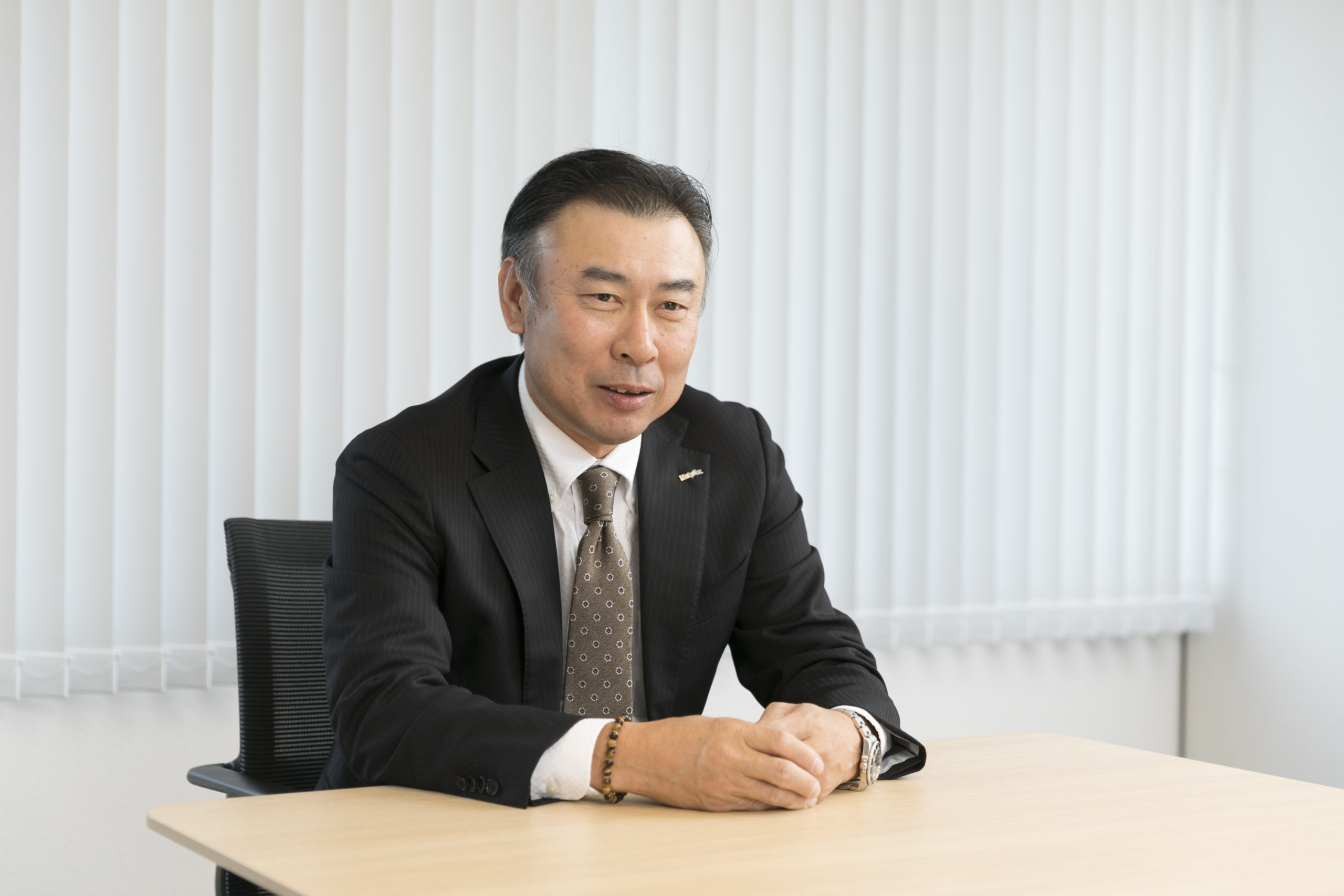
Oya:
In order to start construction, an application for confirmation is required. There are two ways to apply for confirmation: the general route, which conforms to the public notice, and the special route, which requires obtaining ministerial certification. In this case, the scale of the project made it difficult to obtain certification through the general route, but we cleared the requirements for conformance with the public notice by adding anchorage and other innovations. It is precisely because we specialize in membranes that we have the know-how to know what to focus on and how to solve problems in order to keep the construction period.
As a result, the application period was shortened and the subsequent process went smoothly, which is a relief. Ingenuity and ingenuity like this is always important in order to safely deliver results while simultaneously carrying out other projects.
Yamaguchi:
At J-Village, we were very careful in managing the process of steel frame fabrication and membrane fabrication. When discussing partial shapes on site, it is usually possible to solve the problem with drawings, but for complex shapes like this one, it was difficult to understand the problem only with two-dimensional drawings, so a three-dimensional model had to be built.
In particular, since the underlying steel frame and membrane support material are fabricated by separate companies, we had to communicate our details to ensure that the membrane would be firmly anchored, and the pitch of the bolts that anchor the membrane to the underlying steel frame had to be accurate. We explained the basic safety details, such as how to fasten the membrane and the need to square the edges to prevent damage to the membrane, and they proceeded with the fabrication.
We had the drawings assembled in 3D and proceeded with meetings in a manner that was mutually consistent, and received approval from the prime contractor as well. We were able to explain the details to the client in an easy-to-understand manner because we were able to express in 3D what was difficult to understand from the drawings alone. This time, we realized anew the importance of 3D visualization.
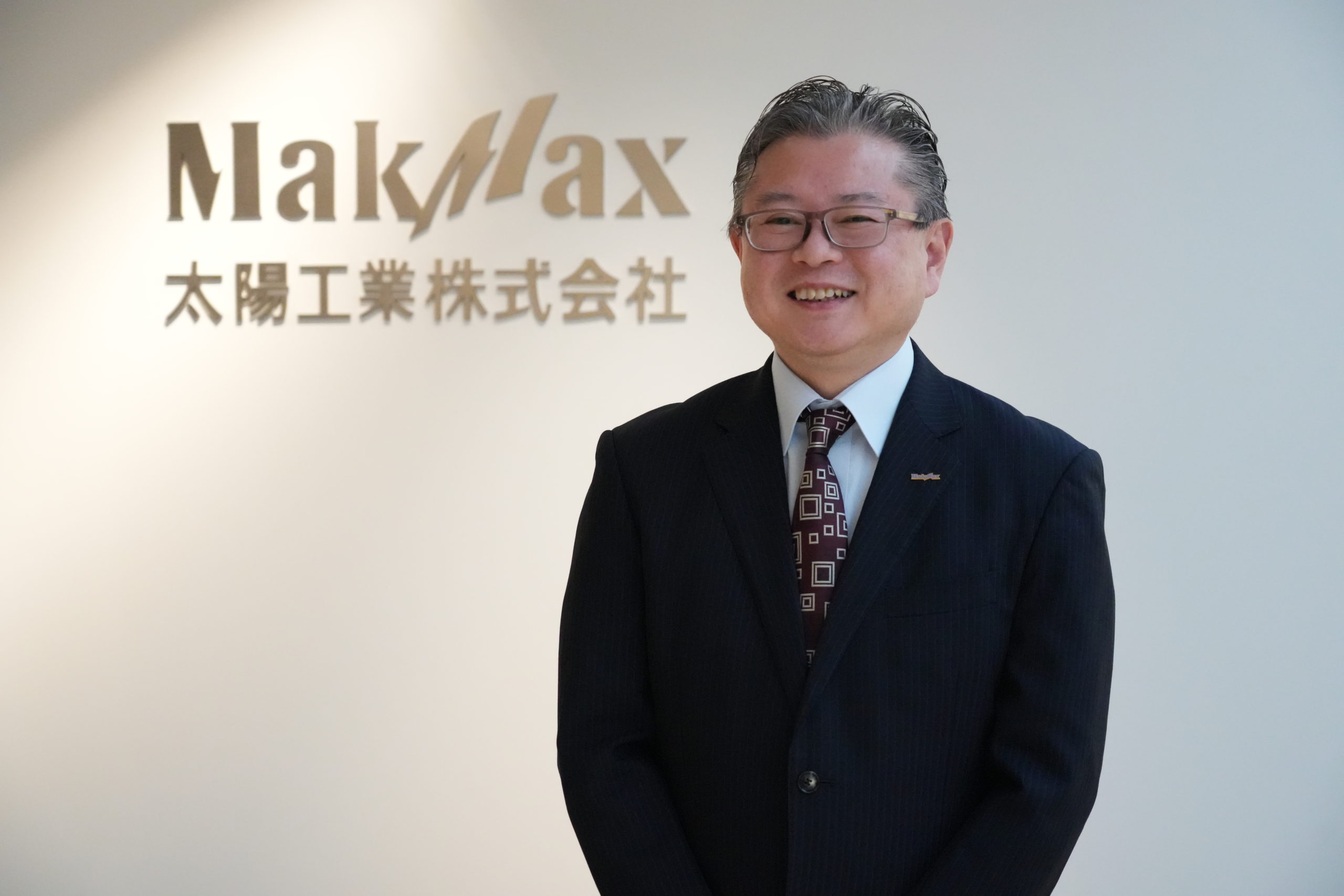
Anno:
As a person working on site, the environment around the site at that time was not favorable, especially for the reconstruction work in the disaster area, and since J-Village brought together workers from all over Japan, it was very difficult to manage the process while paying absolute attention to safety under limited time and conditions, such as arranging accommodation for not only the workers but also the workers themselves. It was very difficult to manage the labor management to organize the process while paying absolute attention to safety under limited time and conditions.
In addition, the placement of the crane had to be done from only one side, and it was necessary to share wisdom and consider the best construction method for the different conditions each time.
The ingenuity and hurdles we have overcome are learning lessons for the future.
The spirit of a Taiyo Kogyo employee who learns from his predecessors and passes it on to his juniors.
Anno:
Although membrane structures are strong once completed, they are unstable during construction. As the typhoon season in September arrived shortly after construction began, wind resistance measures had been taken. However, the membrane under construction was damaged in part by stronger-than-expected winds, and we had to replace parts and make partial repairs. It takes about a week to safely secure a large membrane panel of approximately 100 m in length, so we had to plan the installation by calculating the weather conditions days ahead to determine if strong winds would occur during that time.
In the Northeast, snow must also be taken into consideration. We will make an overall plan for the entire construction project so that the roof can be completed before the snow begins to fall and the interior work can be constructed. However, since the beginning of snowfall is unpredictable, a major point of construction management is to proceed efficiently while consulting with the prime contractor, including labor management.
Taiyo Kogyo has abundant past experience in such large-scale projects, and we have been able to overcome the challenges by referring to the experience of our predecessors. Now that the history of membrane buildings has exceeded 30 years, we feel the importance of maintenance. In such situations, there are areas where data on past properties is not available, and we believe it is important to preserve the necessary information in the form of digital data in the future.
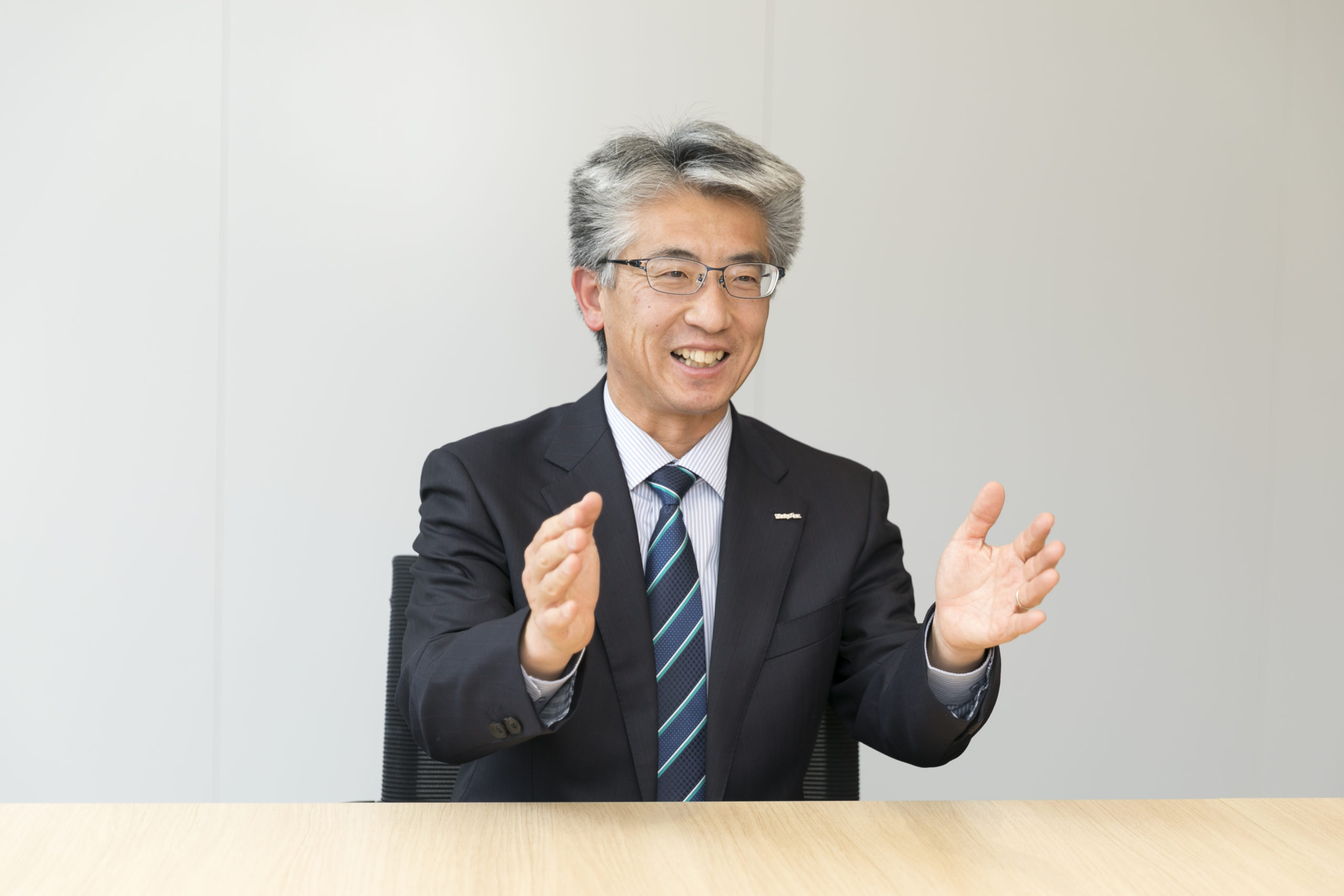
The moment of completion from each standpoint
Deliverying "membranes" in many disaster areas, a sense of mission for reconstruction.
J Village has been restored as a sacred place for soccer.
With what thoughts did those involved in the construction look up at the huge field?
How did they share these stories with their families? The story is told with pride to efforts against natural disasters, which has been repeated since the Great East Japan Earthquake.
Niitani:
I was overwhelmed, to say the least, by the sight of a facility of that scale soaring so high above us. At first, the prime contractor and J-Village gave us a tour, but when I saw the night view from the adjacent hotel building, I knew that the membrane structure was the right choice, and I felt the joy of having been involved in such a large undertaking. Someday I hope to bring my family and say, “I did it! But it was only possible because I had the support of my wonderful construction and design colleagues.”
Since Taiyo Kogyo was originally a tent manufacturing company, I am engaged in sales activities with pride in the fact that we are a company that can be of help to those affected by earthquakes and other natural disasters. At the same time, I am also confident in the fact that we are a company that can make something unique and stand out in terms of design. Although we do not want natural disasters to happen, we hope to always be a company that can be useful in the event of an emergency.
Uemura:
I thought the completed J-Village was amazing. Both as a work of art and the technology, people, and company that built it. The scale of the project, the first time in Japan that a full soccer court was covered with a membrane, is a work that I can be proud of for myself, my family, and my friends. I am also happy that we were able to meet the expectations of so many soccer players and fans.
Although reconstruction work is heartbreaking for those affected by the disaster, it is also an unavoidable theme as Japan is an earthquake-prone country. After the Great East Japan Earthquake, Taiyo Kogyo and its group companies delivered temporary tents to the affected areas immediately after the disaster. I am honestly honored to be working for such a company, as we were given a special assignment to cover the area to prevent the dispersal of contaminants after the nuclear power plant accident. It is because of the efforts and courage of our seniors that we were able to do this, and I have a sense of mission to pass this on to the next generation.
Oya:
Actually, I have not been able to visit J-Village after its completion because I returned to Osaka before it was completed. I have seen it in magazines and on the news, and my honest impression is that such a shape was really built. It is strange to be surprised when I am designing it myself, but it gives me confidence that the shape I drew on the plans is really going to be built. When I go to see it someday, I may experience a different kind of excitement.
Nevertheless, I am happy that what I have been involved in designing is useful to someone, and that it brings even a little peace of mind and smiles to the faces of local residents.
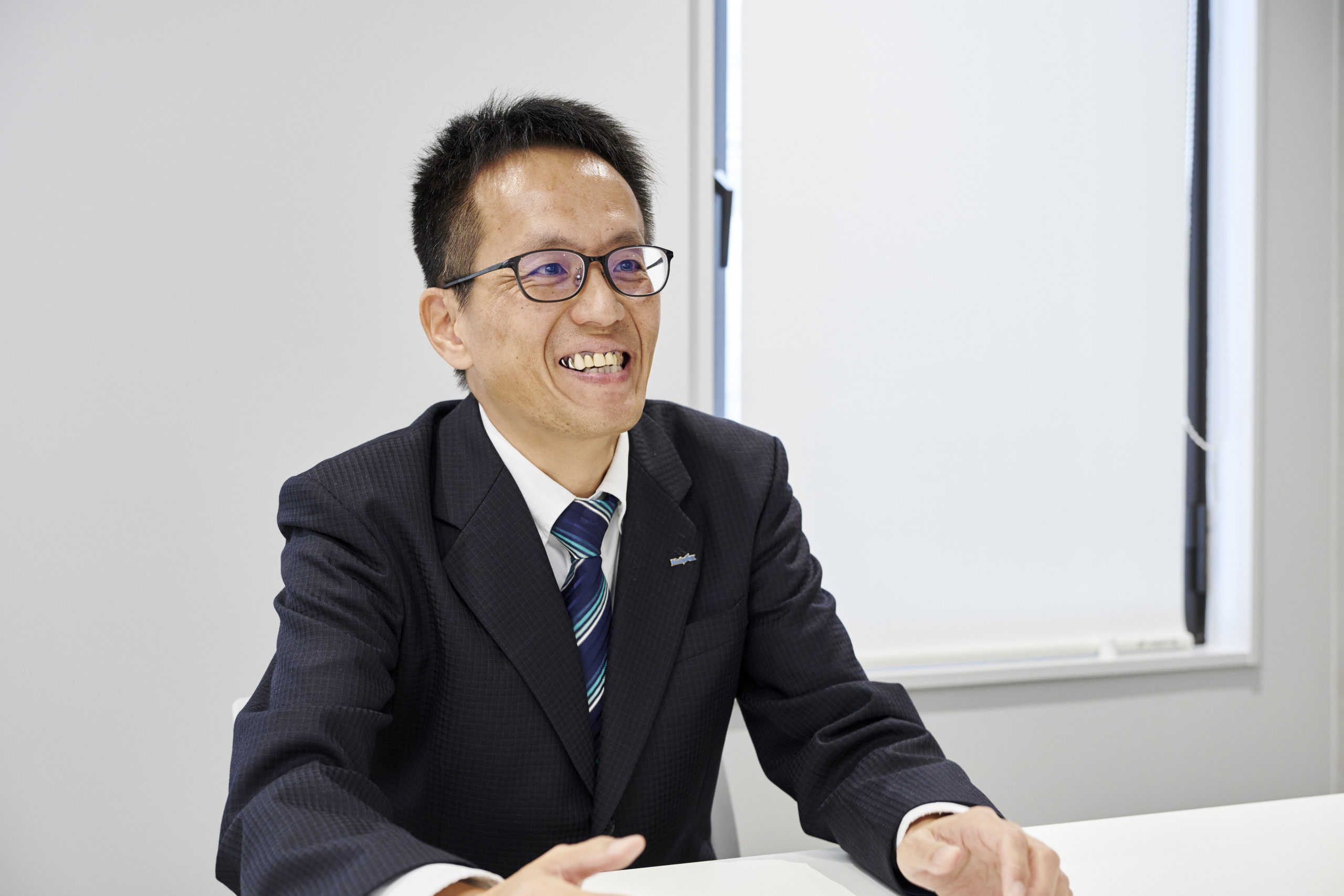
Yamaguchi:
When it was completed, I felt the greatest sense of relief. The building has become very symbolic from a distance and was the starting point for the torch relay for the Tokyo 2020 Olympic Games. I am impressed by the way the building stands at the center of the cityscape, which is changing little by little as the roof of the nearby train station building is also taken care of and regional development continues to progress. My clients also seem to find it interesting and I am happy to accompany them on frequent tours.
We also offer a product called membrane ceiling, which is used as a base for ceilings on gymnasiums, etc. It has the function of limiting damage even if the roof falls during an earthquake, and has been introduced for the renovation of older buildings. Since such facilities are often used as evacuation facilities during emergencies, I think it is important to emphasize the importance of disaster evaluation in the adoption of building materials.
Anno:
I was stationed at the site and was in a position to see the project being completed on a daily basis, but when it was completed, I felt an indescribable sense of power. When I entered the building, it was very bright, and I was glad to have used membrane materials. I often visit the site after its completion for maintenance work, and when I see many people enjoying playing soccer, especially on rainy days, I am happy to see that it is still being used.
Unfortunately, disasters have continued to occur in many parts of Japan since the Great East Japan Earthquake. I also entered Tohoku a few days after the Great East Japan Earthquake, and I believe that we must respond as quickly as possible in the event of an emergency. As a company, our great strengths are the speed with which we can move quickly and our networking ability that unites various departments, including sales, architecture, design, manufacturing, construction, logistics, and national land areas. We would be more than happy to be of service to you by bringing together people, technology, and organization.
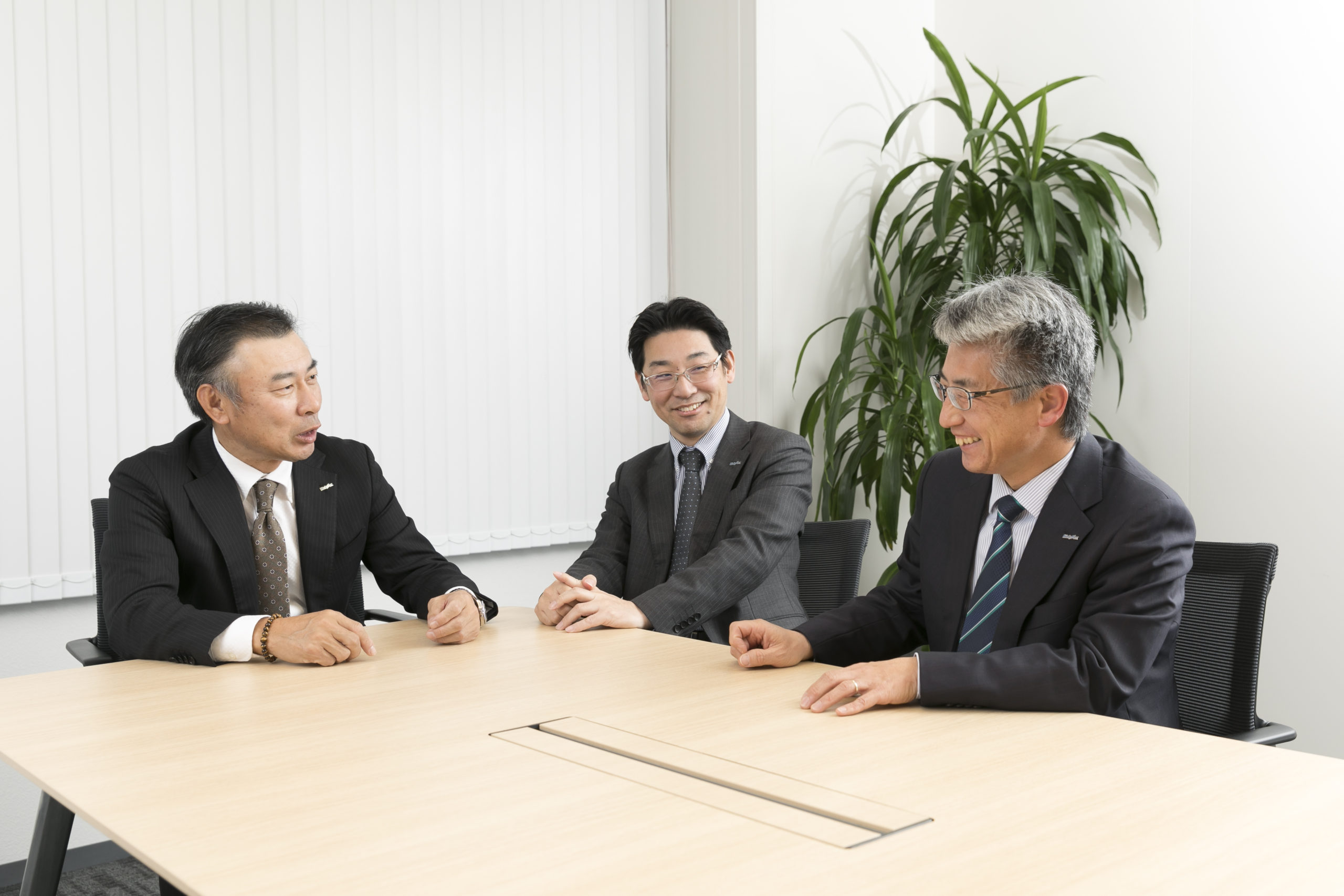
Since the Great East Japan Earthquake, Japan has been hit by numerous natural disasters. There is no perfect defense against natural disasters, which can strike anywhere, at any time, and on any scale. Therefore, the emphasis is on preparedness to minimize damage and support a quicker recovery.
Taiyo Kogyo will continue to make social contributions that support people’s lives by utilizing the power of membranes cultivated over many years, the speed with which we can move quickly, and the unity of the entire company.
Related Articles
- TOP>
- Taiyo Kogyo Column>
- The “J Village” has been revived as a sacred place for soccer, symbolizing each person’s thoughts toward the reconstruction from the Great East Japan Earthquake.






